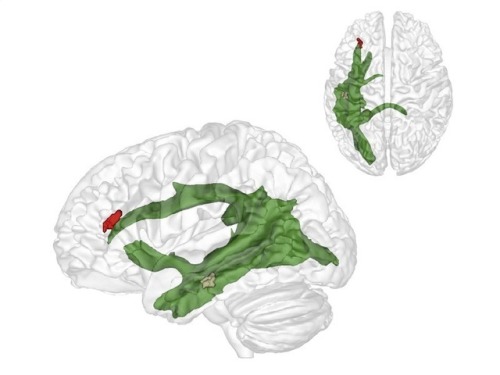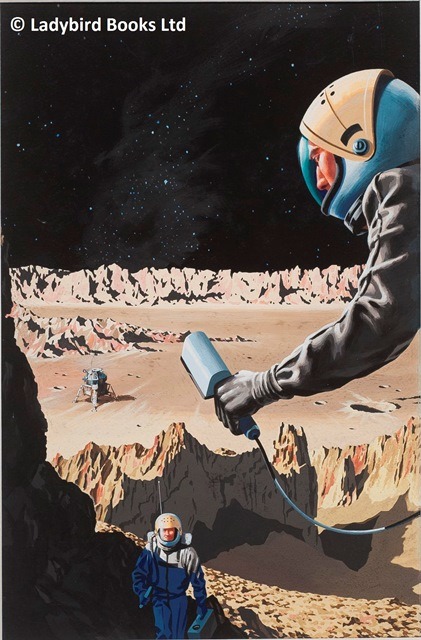The Code That Took America's Apollo 11 to The Moon In The 1960's has Been published
The code that took America's Apollo 11 to the moon in the 1960's has been published

When programmers at the MIT Instrumentation Laboratory set out to develop the flight software for the Apollo 11 space program in the mid-1960s, the necessary technology did not exist. They had to invent it.
They came up with a new way to store computer programs, called “rope memory,” and created a special version of the assembly programming language. Assembly itself is obscure to many of today’s programmers—it’s very difficult to read, intended to be easily understood by computers, not humans. For the Apollo Guidance Computer (AGC), MIT programmers wrote thousands of lines of that esoteric code.
Here’s a very 1960s data visualization of just how much code they wrote—this is Margaret Hamilton, director of software engineering for the project, standing next to a stack of paper containing the software:

The AGC code has been available to the public for quite a while–it was first uploaded by tech researcher Ron Burkey in 2003, after he’d transcribed it from scanned images of the original hardcopies MIT had put online. That is, he manually typed out each line, one by one.
“It was scanned by an airplane pilot named Gary Neff in Colorado,” Burkey said in an email. “MIT got hold of the scans and put them online in the form of page images, which unfortunately had been mutilated in the process to the point of being unreadable in places.” Burkey reconstructed the unreadable parts, he said, using his engineering skills to fill in the blanks.
“Quite a bit later, I managed to get some replacement scans from Gary Neff for the unreadable parts and fortunately found out that the parts I filled in were 100% correct!” he said.
As enormous and successful as Burkey’s project has been, however, the code itself remained somewhat obscure to many of today’s software developers. That was until last Thursday (July 7), when former NASA intern Chris Garry uploaded the software in its entirety to GitHub, the code-sharing site where millions of programmers hang out these days.
Within hours, coders began dissecting the software, particularly looking at the code comments the AGC’s original programmers had written. In programming, comments are plain-English descriptions of what task is being performed at a given point. But as the always-sharp joke detectives in Reddit’s r/ProgrammerHumor section found, many of the comments in the AGC code go beyond boring explanations of the software itself. They’re full of light-hearted jokes and messages, and very 1960s references.
One of the source code files, for example, is called BURN_BABY_BURN--MASTER_IGNITION_ROUTINE, and the opening comments explain why:

About 900 lines into that subroutine, a reader can see the playfulness of the original programming team come through, in the first and last comments in this block of code:

In the file called LUNAR_LANDING_GUIDANCE_EQUATIONS.s, it appears that two lines of code were meant to be temporary ended up being permanent, against the hopes of one programmer:

In the same file, there’s also code that appears to instruct an astronaut to “crank the silly thing around.”

“That code is all about positioning the antenna for the LR (landing radar),” Burkey explained. “I presume that it’s displaying a code to warn the astronaut to reposition it.”
And in the PINBALL_GAME_BUTTONS_AND_LIGHTS.s file, which is described as “the keyboard and display system program … exchanged between the AGC and the computer operator,” there’s a peculiar Shakespeare quote:
This is likely a reference to the AGC programming language itself, as one Reddit user . The language used predetermined “nouns” and “verbs” to execute operations. The verb pointed out 37, for example, means “Run program,” while the noun 33 means “Time to ignition.”
Now that the code is on GitHub, programmers can actually suggest changes and file issues. And, of course, they have
More Posts from Philosophical-amoeba and Others
The History of Hiragana
In Japanese language, we have three types of letters, Kanji, Hiragana, Katakana.
Hiragana’s root is from old Ivrit and Palmyra letters.

The first column: Phoenician alphabet The second column: Ostracon The third column: Old Aramaic The forth column: Imperial Aramaic The fifth column: Dead Sea scrolls The sixth column: Palmyrene script The seventh column: Palmyra

The first column: Hiragana The second column: Consonants The third column: Vowels The forth column: combined with the consonant and the vowel The fifth column: Sousho-tai (a hand writing style) The sixth column: Kanji







The Christopher Robin Story Book from When we were very young, Now we are six, Winnie the Pooh, The House at Pooh Corner by AA Milne Illustrated by Ernest H Shepard London Methuen & Co Ltd. First Edition 1929



Photographer Florent Tanet’s precarious (non-photoshopped) ‘equilibrium’ series

(Image caption: The maturation of fibres of a brain structure called the arcuate fascicle (green) between the ages of three and four years establishes a connection between two critical brain regions: a region (brown) at the back of the temporal lobe that supports adults thinking about others and their thoughts, and a region (red) in the frontal lobe that is involved in keeping things at different levels of abstraction and, therefore, helps us to understand what the real world is and what the thoughts of others are. Credit: © MPI CBS)
The importance of relating to others: why we only learn to understand other people after the age of four
When we are around four years old we suddenly start to understand that other people think and that their view of the world is often different from our own. Researchers in Leiden and Leipzig have explored how that works. Publication in Nature Communications on 21 March.
At around the age of four we suddenly do what three-year-olds are unable to do: put ourselves in someone else’s shoes. Researchers at the Max Planck Institute for Human Cognitive and Brain Sciences (MPI CBS) in Leipzig and at Leiden University have shown how this enormous developmental step occurs: a critical fibre connection in the brain matures. Senior researcher and Leiden developmental psychologist Nikolaus Steinbeis, co-author of the article, took part in the research. Lead author, PhD candidate Charlotte Grosse-Wiesmann, worked under his supervision.
Little Maxi
If you tell a 3-year-old child the following story of little Maxi, they will most probably not understand: Maxi puts his chocolate on the kitchen table, then goes to play outside. While he is gone, his mother puts the chocolate in the cupboard. Where will Maxi look for his chocolate when he comes back? A 3-year-old child will not understand why Maxi would be surprised not to find the chocolate on the table where he left it. It is only by the age of 4 years that a child will correctly predict that Maxi will look for his chocolate where he left it and not in the cupboard where it is now.
Theory of Mind
The researchers observed something similar when they showed a 3-year-old child a chocolate box that contained pencils instead of chocolates. When the child was asked what another child would expect to be in the box, they answered “pencils”, although the other child would not know this. Only a year later, around the age of four years, however, will they understand that the other child had hoped for chocolates. Thus, there is a crucial developmental breakthrough between three and four years: this is when we start to attribute thoughts and beliefs to others and to understand that their beliefs can be different from ours. Before that age, thoughts don’t seem to exist independently of what we see and know about the world. That is, this is when we develop a Theory of Mind.
Independent development
The researchers have now discovered what is behind this breakthrough. The maturation of fibres of a brain structure called the arcuate fascicle between the ages of three and four years establishes a connection between two critical brain regions: a region at the back of the temporal lobe that supports adult thinking about others and their thoughts, and a region in the frontal lobe that is involved in keeping things at different levels of abstraction and, therefore, helps us to understand what the real world is and what the thoughts of others are. Only when these two brain regions are connected through the arcuate fascicle can children start to understand what other people think. This is what allows us to predict where Maxi will look for his chocolate. Interestingly, this new connection in the brain supports this ability independently of other cognitive abilities, such as intelligence, language ability or impulse control.






Dress for the job you want.
Yoshiie Ason yoroi chakuyōzu 義家朝臣鎧着用次第 by Sadatake Ise is a pictorial work on how to put on Japanese Samurai armor. The subject is famed Samurai warrior Minamoto No Yoshiie.
Find more amazing rare books we’ve recently digitized from our Freer | Sackler branch library in our book collection, Japanese Illustrated Books from the Edo and Meiji Period.


Pacific Lamprey (Entosphenus tridentatus)
Lampreys in their mature stage are parasites, latching onto other fish with their suction cup like mouths. Keratinised teeth rasp away their host’s skin, as the lamprey releases anticoagulants to ensure a steady supply of blood. Many victims die of infections or blood loss.
Dave Herasimtschuk and Jeremy Monroe
The Fibonacci sequence can help you quickly convert between miles and kilometers
The Fibonacci sequence is a series of numbers where every new number is the sum of the two previous ones in the series.
1, 1, 2, 3, 5, 8, 13, 21, etc. The next number would be 13 + 21 = 34.
Here’s the thing: 5 mi = 8 km. 8 mi = 13 km. 13 mi = 21 km, and so on.
Edit: You can also do this with multiples of these numbers (e.g. 5*10 = 8*10, 50 mi = 80 km). If you’ve got an odd number that doesn’t fit in the sequence, you can also just round to the nearest Fibonacci number and compensate for this in the answer. E.g. 70 mi ≈ 80 mi. 80 mi = 130 km. Subtract a small value like 15 km to compensate for the rounding, and the end result is 115 km.
This works because the Fibonacci sequence increases following the golden ratio (1:1.618). The ratio between miles and km is 1:1.609, or very, very close to the golden ratio. Hence, the Fibonacci sequence provides very good approximations when converting between km and miles.

The @unirdg-collections Squint
The University of Reading holds the archive of original artwork for the much-loved Ladybird children’s book. This painting on board was used to illustrate Exploring Space, a Ladybird ‘Achievements’ Book first published in 1964. The artwork was created by Brian Knight.

If you look closely at the painting, you can see the faint trace of Knight’s initial design for the lunar landing module - just visible under the later amendment.

Published before the first Moon landing in 1969, the fantasy spacecraft was sleek and utopian. It typifies the extent to which The Space Race captured our mid-century imaginations and permeated visual culture. The later correction, based on the Eagle Lunar Module, was printed in subsequent revisions to the book. It was an acknowledgment of a successful mission and testament to Ladybird’s emphasis on accuracy for its young readers.

All artwork is © Ladybird Books Ltd.
-
 luecard reblogged this · 2 years ago
luecard reblogged this · 2 years ago -
 astirysk2electricboogaloo liked this · 2 years ago
astirysk2electricboogaloo liked this · 2 years ago -
 sewer-dweller reblogged this · 2 years ago
sewer-dweller reblogged this · 2 years ago -
 sewer-dweller liked this · 2 years ago
sewer-dweller liked this · 2 years ago -
 sinisterrrrrrrr reblogged this · 2 years ago
sinisterrrrrrrr reblogged this · 2 years ago -
 deadlysunlight liked this · 2 years ago
deadlysunlight liked this · 2 years ago -
 zacharymease reblogged this · 3 years ago
zacharymease reblogged this · 3 years ago -
 innaturallight liked this · 4 years ago
innaturallight liked this · 4 years ago -
 laked-nunch liked this · 4 years ago
laked-nunch liked this · 4 years ago -
 kurtflir232 liked this · 4 years ago
kurtflir232 liked this · 4 years ago -
 alicedowntherabbitholeworld liked this · 5 years ago
alicedowntherabbitholeworld liked this · 5 years ago -
 youcancallmezann-blog liked this · 5 years ago
youcancallmezann-blog liked this · 5 years ago -
 stjerniborg reblogged this · 5 years ago
stjerniborg reblogged this · 5 years ago -
 tvmblrmeaux reblogged this · 5 years ago
tvmblrmeaux reblogged this · 5 years ago -
 tvmblrmeaux liked this · 5 years ago
tvmblrmeaux liked this · 5 years ago -
 probably-not-porter liked this · 5 years ago
probably-not-porter liked this · 5 years ago -
 blepeislathoseikona liked this · 5 years ago
blepeislathoseikona liked this · 5 years ago -
 seregkat liked this · 5 years ago
seregkat liked this · 5 years ago -
 fyrism liked this · 5 years ago
fyrism liked this · 5 years ago -
 lo-rena liked this · 5 years ago
lo-rena liked this · 5 years ago -
 jacelys reblogged this · 5 years ago
jacelys reblogged this · 5 years ago -
 4myboyslovema reblogged this · 6 years ago
4myboyslovema reblogged this · 6 years ago -
 artwellian liked this · 6 years ago
artwellian liked this · 6 years ago -
 mattamks liked this · 6 years ago
mattamks liked this · 6 years ago -
 procrastinaciones liked this · 6 years ago
procrastinaciones liked this · 6 years ago -
 lazydragon0316 reblogged this · 6 years ago
lazydragon0316 reblogged this · 6 years ago -
 saffronshadows liked this · 6 years ago
saffronshadows liked this · 6 years ago
A reblog of nerdy and quirky stuff that pique my interest.
291 posts

